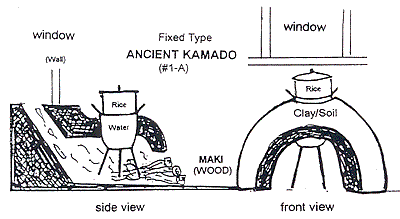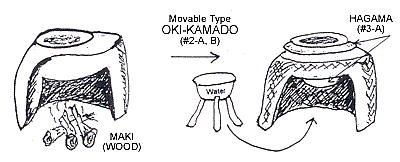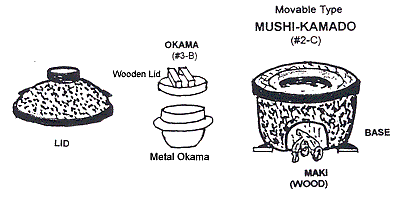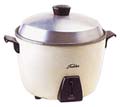|
Automated Appliances:
Robotic Rice Cookers History Wahiawa Middle School - Team #05-0099 |
<Introduction> <History> <Current> <Future> <Bibliography> <About Us>
|
Automated Appliances:
Robotic Rice Cookers History Wahiawa Middle School - Team #05-0099 |



Utilizing
electricity to cook rice was first experimented with during the end of
the
Taisho era (mid 1920s). These “electric
stoves” and “electric rice tubs” were merely stoves and tubs with
heating coils
attached[2].
In the late 1940’s, the Mitsubishi Electric Corporation made an electric rice cooker that was a simple pot that had a heating coil inside. It was the closest thing to the rice cookers of today. However, this model was inconvenient because it required total attention during the duration of cooking and had no automation. Matsushita Electric launched a similar rice cooker and Sony launched an electronic rice tube, but they also were not successful[2].
 On
December 10, 1956, the Toshiba project team put 700 automatic rice
cookers on
the market but the reputation of rice cookers
had distributors
reluctant to
sell them. Instead, Toshiba had the
electric power companies which had
problems with surplus power, acting
as distributors. Their employees went to
homes to
demonstrate the rice cookers and instead of sinking like
lead, sales
soared
like balloons! After its sudden
popularity, Toshiba began to produce 200,000 rice cookers a
month. Four
years
later, rice cookers could be found in half of the homes in
On
December 10, 1956, the Toshiba project team put 700 automatic rice
cookers on
the market but the reputation of rice cookers
had distributors
reluctant to
sell them. Instead, Toshiba had the
electric power companies which had
problems with surplus power, acting
as distributors. Their employees went to
homes to
demonstrate the rice cookers and instead of sinking like
lead, sales
soared
like balloons! After its sudden
popularity, Toshiba began to produce 200,000 rice cookers a
month. Four
years
later, rice cookers could be found in half of the homes in
http://www.toshiba.co.jp/kakan/en/history/1goki/1955rice.html
Toshiba’s
success was due to a timer that could
set the rice cooker to cook perfectly on its own. The
secret was to detect exactly when the
rice began to boil and to turn off the switch exactly 20 minutes later. Their method was to have two pots: the outer
pot was filled with a cup of water and the inner pot cooked the rice.
Toshiba
used the evaporation of the water from the outer pot as the timer. When the water in the outer pot evaporated in
20 minutes, it signified that the temperature exceeded 100 degrees
Celsius and was
detected by a bimetallic thermostat that could turn the switch off. This design was so successful that it remained
unchanged for nine years[2].